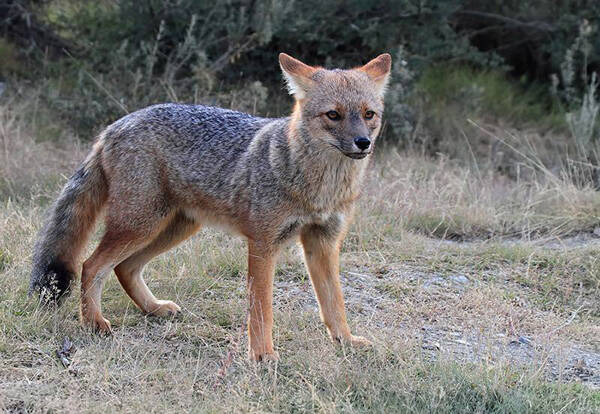Lycalopex culpaeus
IUCN
LCBasic Information
Scientific classification
- name:Lycalopex culpaeus
- Scientific Name:Lycalopex culpaeus,Lobo Andino、Culpeo,Cobain fox, Ecuadorian jackal
- Outline:Carnivora
- Family:Schizopoda Canidae Vulpes Pseudocelphus
Vital signs
- length:44.5-92.5cm
- Weight:3.4-4kg
- lifetime:About 15 years
Feature
It is the second largest canid in South America, second only to the maned wolf.
Distribution and Habitat
Distributed in Argentina, Bolivia, Chile, Ecuador and Peru.
Most common west of the Andes, inhabiting open and vast areas and deciduous forests. Generally recorded as living in earth holes, tree holes or abandoned holes of other animals. In northern areas, badger holes are used or expanded. Sometimes they even live in the same hole group with badgers. They are active on hillsides, often living in large rock crevices or ravines, and only live in dens during the breeding season.
Appearance
The mountain fox is 44.5-92.5 cm long and weighs 3.4-4 kg. It is the second largest canid in South America, second only to the maned wolf. It looks very similar to the red fox, with gray and red fur, a white chin, red feet, and a stripe on the back. The tail is long. The fur color varies depending on the season and distribution area, slightly lighter in summer and slightly darker in winter. Those living in the northern region have lighter fur. The chin and abdomen are white to light yellow-brown. The ears, neck, legs, sides of the body and top of the head are yellow-brown or reddish-brown. The hair around the tail is usually darker, sometimes dark gray. The tail is dense gray with a black tip. In winter, the fur becomes longer and denser.
The body is slender. The snout is pointed and long, the nose is slender, the front of the forehead is flat, with a narrow groove in the middle, and the ears are large, high, pointed, and upright. The limbs are short and the tail is long, slightly m
Details
Mountain fox (scientific name: Lycalopex culpaeus) is also known as Lobo Andino and Culpeo, and has 6 subspecies.

Mountain foxes have well-developed hearing and smell, are cunning, and are agile. They like to act alone. They hunt at night. They usually come out at night and sleep in caves during the day. Their long tails are moisture-proof and warm, but in remote places, they sometimes come out during the day to look for food. Although their legs are short, their claws are sharp and they run very fast.
The mountain fox is a species that likes to act alone. It only stays with its mating pair and friends during the breeding season. In Patagonia, the species has been recorded running about 7 kilometers per hour, and in the deserts of northern Chile, the speed recorded is 21 kilometers per hour. The activity pattern varies depending on the region. In Argentina, Peruvian highlands, Chilean deserts and Magellan, they are nocturnal, but in central Chile, they only come out after sunset.
The mountain fox mainly eats rodents, rabbits, birds and lizards, and sometimes plants and carrion.
The breeding season of mountain foxes is from early August to October every year. The gestation period lasts 55 to 60 days, and the average litter size is 5.2. The average weight of newborns is 170 grams. They are late mature and the cubs are born with their eyes closed. They are weaned in 2 months, grow into adults in about 7 months, and sexual maturity occurs after a year.
Mountain foxes were once seen on the Falkland Islands, but due to the entry of humans, they are no longer seen. According to biologists, the extinct Falkland wolf may be its close relative. They sometimes attack sheep, so they are hunted or poisoned. In some areas, their numbers are very small, but overall they are not threatened.
Listed in the 2008 Red List of Threatened Species of the World Conservation Union (IUCN) ver 3.1 - Least Concern (LC).
Protect wild animals and eliminate game.
Maintaining ecological balance is everyone's responsibility!








